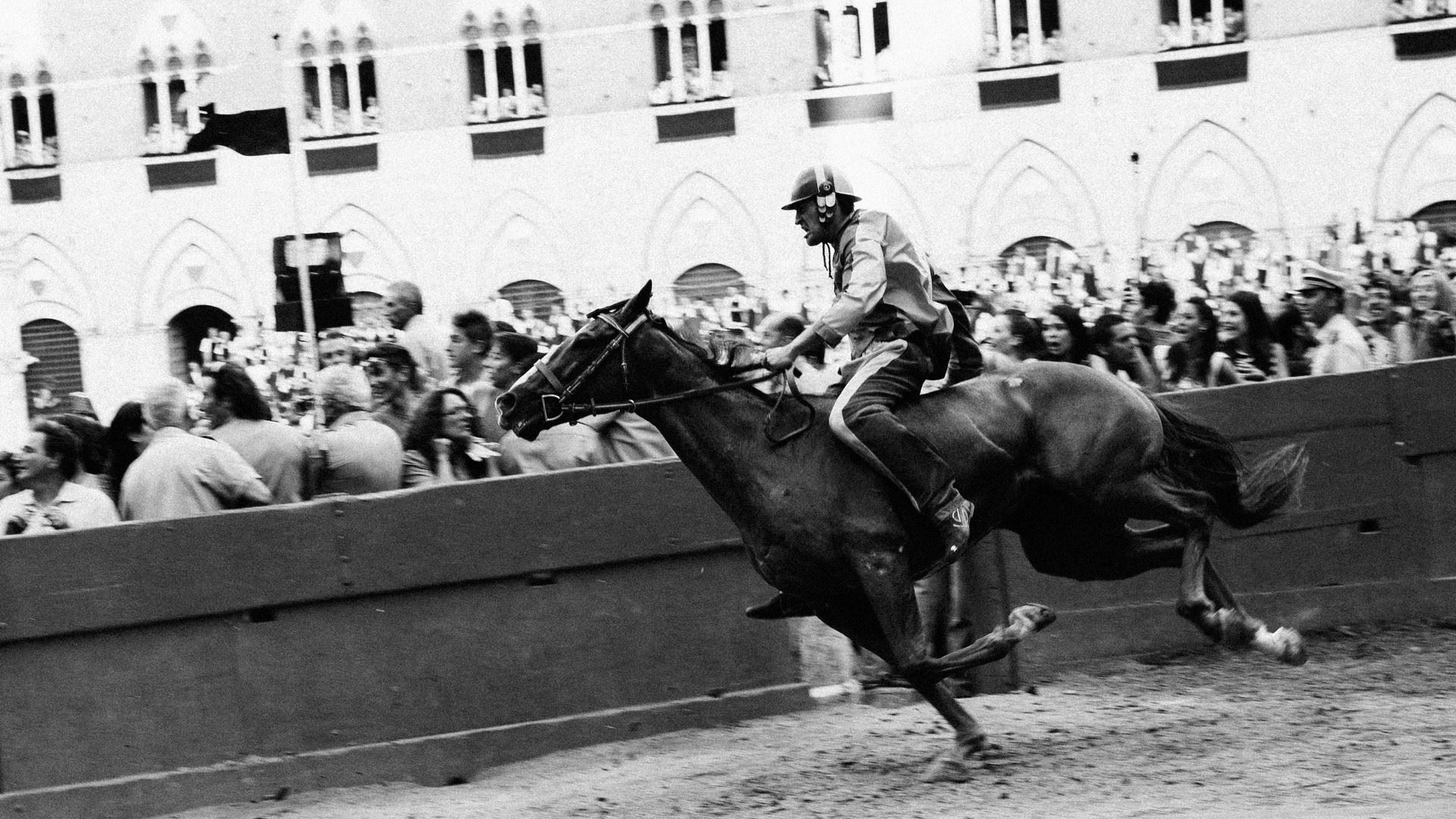London-based Greg Funnell has been a professional photographer for more than 10 years and his work regularly appears in publications including The Sunday Times, Financial Times and Vanity Fair. A documentary photographer by profession, he is also a Fellow of the Royal Geographical Society and his job has varied from working in war zones to covering cultural events. This image is from a collection taken at the famous Tuscany horse race, The Palio, which takes place in July and August each year. Tuscan Guru asked him about his approach to capturing this classic spectacle through his reportage lens.
TG: What interested you in The Palio as a subject?
GF: I’m very interested in the masculinity displayed in certain cultures, the idea of self-sufficiency and the heroics represented by it. The Palio is full of intrigue, but on the surface the jockeys are god-like figures, almost mythical. They’re put on pedestals by the various contradas [the different districts of Siena] and worshipped like athletes. There’s a romance to it all, but a deeper, darker side that interests me, too.
TG: Photos of The Palio tend to focus on the vast crowds, yet for this image you chose to make one rider and his horse the focus, why?
GF: A lot of my pictures from this collection do focus on the build-up and the crowd, but in the pre-race moment. I’m always looking to capture energy and freeze the moment so that you really get a sense of the drama – a still photo is 2D and needs to have an emotion in it to communicate in the best way it can. This photo captures a moment; it’s about the guy fighting to win the competition, but doing it at one with an animal. Naturally, you get the movement in the shot, which adds to the sense of drama.
TG: Why did you choose to shoot The Palio in black and white?
GF: The Palio is an incredibly colourful event. Yet, the pomp and ceremony detracts from its grittier nature. It’s all a disguise, like a conjurer’s trick, to distract your eyes and brain. But for me, the Palio is about the people, the animals and the emotions. The only way to get to grips with that was to lose the colour entirely. I also wanted the pictures to feel timeless and colour dates too quickly. I didn’t want it to be about a specific Palio in a specific year, I wanted the images to be about The Palio, to represent something bigger.
TG: As a British photographer, did you feel like an outsider?
GF: Very much so in some ways – but I’m always the outsider, it’s where I’m comfortable being. I like being ignored so that I can work. If I am the focus of attention, I can’t make good pictures. This was useful for The Palio – if you had any political allegiances with one contrade over another, that would make life difficult. That’s the level of seriousness with which the event is taken, husbands and wives from different contrada sometimes don’t speak to each other in the run up to The Palio. The tension is that high.
TG: The race is fast and furious, what was it like to shoot?
GF: The race takes place for less fewer than three minutes and the photographers are allowed on the track with the horses – there’s no barrier. Yet, the real danger, according to the local photographers, is the crowd after the race, because they surge onto the track and you can get caught in a stampede. It’s quite a visceral experience. As a photographer you’re caught up in the physicality of the event. I love that. It forces you to be part of it and engage your senses; you have a role to get those pictures – that’s your own private battle and race.
You can see more images from Greg’s collection, The Palio, and his other work here.














